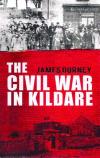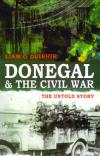BOOKWORM
Published in Book Reviews, Issue 4 (July/August 2011), Reviews, Volume 19 In a previous life, when Bookworm drove a leaky antique BSA 350, the bible of all do-it-yourself motorcycle mechanics was the Haynes manual. With the Haynes, a screwdriver and vice-grips, you could strip down and rebuild almost any machine. Now Richard P. de Kerbrech and David Hutchings have applied the same formula—cutaway diagrams, detailed drawings, photographs—in RMS Titanic: 1909–12 (Olympic class) Owners’ Workshop Manual (Haynes Publishing, 160pp, £19.99, ISBN 9781844256624). Expect a plethora of books, articles (including in HI), TV documentaries and merchandise on the ill-fated liner over the next few months but it will be hard to beat this, especially for any ‘techie’ readers who want to get down (literally!) to the nuts and bolts of this awesome piece of engineering.
In a previous life, when Bookworm drove a leaky antique BSA 350, the bible of all do-it-yourself motorcycle mechanics was the Haynes manual. With the Haynes, a screwdriver and vice-grips, you could strip down and rebuild almost any machine. Now Richard P. de Kerbrech and David Hutchings have applied the same formula—cutaway diagrams, detailed drawings, photographs—in RMS Titanic: 1909–12 (Olympic class) Owners’ Workshop Manual (Haynes Publishing, 160pp, £19.99, ISBN 9781844256624). Expect a plethora of books, articles (including in HI), TV documentaries and merchandise on the ill-fated liner over the next few months but it will be hard to beat this, especially for any ‘techie’ readers who want to get down (literally!) to the nuts and bolts of this awesome piece of engineering.
 The city that built the great ship features in Bombs on Belfast: The Blitz 1941 (87pp, £7.99, ISBN 9781906578916), first published just after the destruction caused by the German bombs that rained down on an almost defenceless city in April and May 1941. It was republished by Pretani Press some 40 years later and now, to mark the 70th anniversary, it has been published for a third time by Colourpoint Books (in association with the Belfast Telegraph). This collection of contemporary photographs (151, reproduced to a high
The city that built the great ship features in Bombs on Belfast: The Blitz 1941 (87pp, £7.99, ISBN 9781906578916), first published just after the destruction caused by the German bombs that rained down on an almost defenceless city in April and May 1941. It was republished by Pretani Press some 40 years later and now, to mark the 70th anniversary, it has been published for a third time by Colourpoint Books (in association with the Belfast Telegraph). This collection of contemporary photographs (151, reproduced to a high
 quality), with short but informative captions, takes the reader on a ‘virtual’ tour of the bomb-torn city.
quality), with short but informative captions, takes the reader on a ‘virtual’ tour of the bomb-torn city.
The latest (No. 6) Journal of the Bray Cualann Historical Society (166pp, ISSN 16490916, ISBN 9771649091018) is a special issue to commemorate the centenary of the birth of Cearbhall Ó Dálaigh, born in the town in 1911. His census form for that year is reproduced, where his father’s ‘rank or profession’ is given as ‘fishmonger’. When Minister for Defence Paddy Donegan described his referral of the draconian Emergency Powers Act (1976) to the Supreme Court as a ‘thundering disgrace’, Ó Dálaigh felt that he had no option but to resign, the only president of Ireland to have done so. Contrary to rumour then and since, the journalist present, Don Lavery—and as related in a short piece here by Colm Kenny—has always insisted that these were the words used and not something
 more colourful. Other sections of this excellently produced journal include a miscellany of Bray stories 1788–2011, Bray Public Library 1911–2011, and ‘remarkable women’, including Elise Sandes (https://www.historyireland.com //volumes/volume13/issue4/news/?id=113859) and boxer Katie Taylor.
more colourful. Other sections of this excellently produced journal include a miscellany of Bray stories 1788–2011, Bray Public Library 1911–2011, and ‘remarkable women’, including Elise Sandes (https://www.historyireland.com //volumes/volume13/issue4/news/?id=113859) and boxer Katie Taylor.
In a similar legal vein, Mary Kotsonouris, familiar to readers for her work on the Dáil courts (https://www.historyireland.com///volumes /volume2/issue3 /features/?id=115100), has just published ‘’Tis all lies, Your Worship . . .’: tales from the District Court (The Liffey Press, 142pp, €19.95/£17.95, ISBN 9781905785971), which is part history, part memoir. In addition to explaining how the District Courts were founded, she describes some of the many colourful justices and the many intriguing cases over which they presided, including the sensational Rose Tattoo prosecution in 1957.
Paddy Donegan’s successor as minister for defence in 1976, Oliver J. Flanagan, once
 lamented (a few years earlier) that ‘there was no sex in Ireland until Telefís Éireann’. This may come as a surprise to anyone (myself included) born before 1961/62 but is irresistible as a sound-bite, which is why we’re using it as the title of our Hedge School to mark the 50th anniversary of RTÉ on 10 September (see ad, p. 62). One of the speakers will be Robert J. Savage, whose long-awaited A loss of innocence? Television and Irish society 1960–72 has just been published (Manchester University Press, 402pp, £70, ISBN 9780719077852). The book also traces the development of the BBC and ITV in Northern Ireland and how television helped to undermine a state that had long governed without consensus.
lamented (a few years earlier) that ‘there was no sex in Ireland until Telefís Éireann’. This may come as a surprise to anyone (myself included) born before 1961/62 but is irresistible as a sound-bite, which is why we’re using it as the title of our Hedge School to mark the 50th anniversary of RTÉ on 10 September (see ad, p. 62). One of the speakers will be Robert J. Savage, whose long-awaited A loss of innocence? Television and Irish society 1960–72 has just been published (Manchester University Press, 402pp, £70, ISBN 9780719077852). The book also traces the development of the BBC and ITV in Northern Ireland and how television helped to undermine a state that had long governed without consensus.
Readers who acquired a taste for the work of L. Perry Curtis Jr in the last issue (‘Three Oxford liberals and the Plan of Campaign in Donegal, 1889’) will enjoy The depiction of eviction in Ireland 1845–1910 (University College Dublin Press, 386pp, €60/£50 hb, €30/
 £23 pb, ISBN 9781906359577/84), from which it was abstracted. This is a beautifully illustrated book with high-quality plates of paintings, photographs and contemporary prints, many in colour.
£23 pb, ISBN 9781906359577/84), from which it was abstracted. This is a beautifully illustrated book with high-quality plates of paintings, photographs and contemporary prints, many in colour.
Tullamore, Co. Offaly, is a relatively new settlement. Its early growth was promoted by benign local landlords, the earls of Charleville, who were in turn succeeded by a shrewd merchant class who prospered on drink, tobacco and stone. Its history is now celebrated in a large-format publication, Tullamore: a portrait (Esker Press, for Offaly Historical and Archaeological Society, 274pp, €30, ISBN 9780954872052). Written by solicitor Michael Byrne, who has single-handedly transformed the local history of the ‘faithful county’ over the years, it is beautifully illustrated by architect and town planner Ferghal MacCabe. Well-chosen photographs, both old and new, are also reproduced to an equally high standard.
 The Civil War used to be a neglected area of Irish history—but not for long, if Mercier Press has its way. As well as republishing earlier works—the latest, although in this case about the War of Independence, is On the run: the story of an Irish freedom fighter (352pp, €16.99, ISBN 9781856357517), a translation of Colm Ó Gaora’s 1943 Mise edited by Mícheál Ó hAodha and Ruán O’Donnell—Mercier has also commissioned new material on the Civil War, taking a two-pronged approach. One is their Military History of the Irish
The Civil War used to be a neglected area of Irish history—but not for long, if Mercier Press has its way. As well as republishing earlier works—the latest, although in this case about the War of Independence, is On the run: the story of an Irish freedom fighter (352pp, €16.99, ISBN 9781856357517), a translation of Colm Ó Gaora’s 1943 Mise edited by Mícheál Ó hAodha and Ruán O’Donnell—Mercier has also commissioned new material on the Civil War, taking a two-pronged approach. One is their Military History of the Irish
 Civil War series (general editor Gabriel Doherty), a set of concise primers aimed at the Leaving Cert, undergraduate and general reader. The latest is Liz Gillis’s The fall of Dublin (160pp, €12.99, ISBN 9781856356800), an account of the attack on the Four Courts. The other ‘prong’ consists of more detailed ‘county histories’ of the Civil War. The latest of those are James Durney’s The Civil War in Kildare (224pp, €16.99, ISBN 9781856357579) and Liam Ó Duibhir’s Donegal and the Civil War (288pp, €19.99, ISBN 9781856357203). While Kildare was quiet during the War of Independence, owing to the presence of a substantial British garrison, it was particularly violent during the Civil War. In Donegal the bulk of the IRA was pro-Treaty but up until hostilities actually broke out they turned a blind eye to the anti-Treaty IRA’s ‘northern offensive’. HI
Civil War series (general editor Gabriel Doherty), a set of concise primers aimed at the Leaving Cert, undergraduate and general reader. The latest is Liz Gillis’s The fall of Dublin (160pp, €12.99, ISBN 9781856356800), an account of the attack on the Four Courts. The other ‘prong’ consists of more detailed ‘county histories’ of the Civil War. The latest of those are James Durney’s The Civil War in Kildare (224pp, €16.99, ISBN 9781856357579) and Liam Ó Duibhir’s Donegal and the Civil War (288pp, €19.99, ISBN 9781856357203). While Kildare was quiet during the War of Independence, owing to the presence of a substantial British garrison, it was particularly violent during the Civil War. In Donegal the bulk of the IRA was pro-Treaty but up until hostilities actually broke out they turned a blind eye to the anti-Treaty IRA’s ‘northern offensive’. HI



















